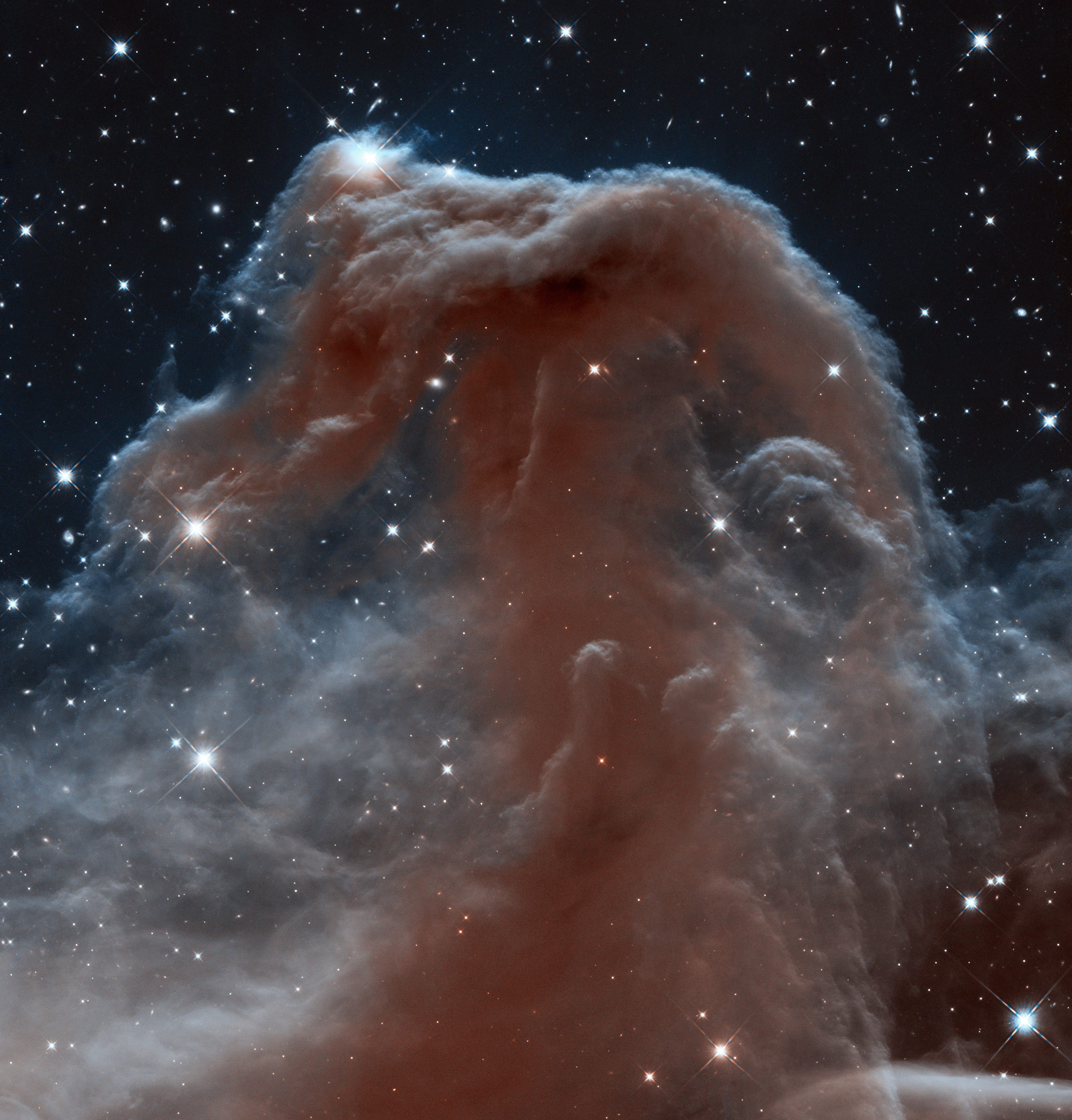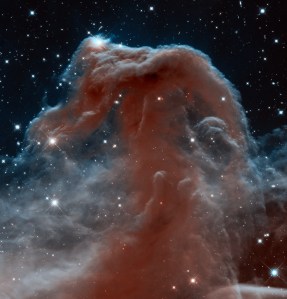
Horsehead Nebula
Looking like an apparition rising from whitecaps of interstellar foam, the iconic Horsehead Nebula has graced astronomy books ever since its discovery over a century ago. The nebula is a favorite target for amateur and professional astronomers. In this Hubble Space Telescope view, the nebula appears in a different light, as seen in infrared wavelengths. The nebula, shadowy in optical light, appears transparent and ethereal when seen in the infrared, represented here with visible shades. The rich tapestry of the Horsehead Nebula pops out against the backdrop of Milky Way stars and distant galaxies that are easily seen in infrared light. The backlit wisps along the Horsehead's upper ridge are being illuminated by Sigma Orionis, a young five-star system just off the top of the Hubble image. A harsh ultraviolet glare from one of these bright stars is slowly evaporating the nebula. Along the nebula's top ridge, two fledgling stars peek out from their now-exposed nurseries. Gas clouds surrounding the Horsehead have already dissipated, but the tip of the jutting pillar contains a slightly higher density of hydrogen and helium, laced with dust. This casts a shadow that protects material behind it from being photo-evaporated, and a pillar structure forms. Astronomers estimate that the Horsehead formation has about five million years left before it too disintegrates. The Horsehead Nebula is part of a much larger complex in the constellation Orion. Known collectively as the Orion Molecular Cloud, it also houses other famous objects such as the Great Orion Nebula (M42), the Flame Nebula, and Barnard's Loop. At about 1,500 light-years away, this complex is one of the nearest and most easily photographed regions in which massive stars are being formed.
- X

























